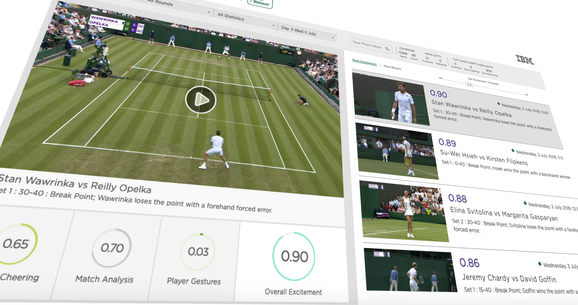How Wimbledon and Watson use AI to edit autofocus for video (Part 1)

Audiences will surely remember the breathtaking tennis final between Novak Djokovik and Roger Federer at Wimbledon 2019 on July 14th. Wimbledon tennis championship is one of the most prestigious sporting events in the world. Wimbledon is also the oldest tennis tournament in the world when it was first organized in 1877.
Many things have changed in the last 142 years – from players’ costumes to the quality of their accompanying items. However, behind it is a continuous development of artificial intelligence technology, which has been changing the way images are captured and edited for the public.
Wimbledon has all 18 grass fields. It is also the venue for nearly 700 matches in a two-week period, including men’s singles, women’s singles, men’s doubles, women’s doubles and women’s matches and many more forms of competition. Six main matches, holding matches attract the most attention, there are an average of about four matches a day. Last year, for the first time, all activities in 18 stadiums were broadcasted online, using a combination of cameras with operators and robots. Therefore, developments in the yard are provided to viewers with unprecedented numbers as before. However, it also created a lot of scenes, too much to screen information in time. This is where IBM believes automation can work.
IBM has worked with Wimbledon organizers at All England Lawn Tennis & Croquet Club (AELTC) for three decades. This unit is in charge of information technology, network security and all digital assets serving customers, including applications and websites, where fans update developments.
In the past six years, IBM has applied AI Watson’s intelligence in many ways, but IBM recently increased its use of Watson in Wimbledon. Here, Watson helped capture all the best bits of data in each match and packed them in a two-minute highlight at the end of the game, updating the section that was thought to cause the most labor-intensive.
Simon Boyden, chief architect at IBM, said in a briefing: “We are doing the job in a traditional way that will cost a lot of manpower, expenses and time, from which to support in making match points as quickly as possible. ”
